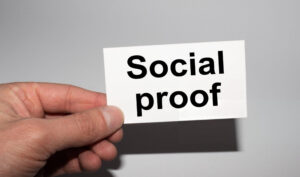Your logo is the first thing your customers will see when they come across your business. Whether it’s on a billboard or in print, it needs to be memorable and unique to set you apart from the competition. A strong logo is also an investment that won’t just pay off in the short term but over time as well. If you want to create something that will last for years, make sure you’re investing in high-quality design services.
Wordmark

A wordmark is a logo made up of your company or brand name, and while it may sound basic, this type of logo can be used to build a strong identity for your business. It’s great for companies that want to convey a message through their logo, as well as those who want to use their mark in multiple ways (like for branding and marketing).
Wordmarks tend to have more personality than other types of logos because they include copy—typically the name of your company or brand—but this can also backfire if you choose something too abstract or difficult to read at small sizes. If you go with a wordmark, make sure it’s easy on the eye and easy on the mind so people don’t get lost trying to figure out what exactly they are looking at!
Lettermark

A lettermark is a logo that uses a single letter or letters from your brand name.
Did you know? A lettermark is sometimes called a logotype. It’s also known as an oblique typeface and it’s one of the simplest logos to create.
These types of logos are easy to remember because they’re very unique compared with other brands that use more complex designs and colors like zigzag lines or abstract shapes.
Lettermarks are often used for single word brands so if your company has just two words in its name then this might be an excellent choice for your new logo design!
Pictorial mark

A pictorial logo is a great way to make your brand stand out, but it may not be the best choice for every business. First off, you can’t always tell what an image means until you know where it comes from. This can cause confusion in customers and consumers who may think your company has other motives than what they truly do. A great way to avoid this issue is by making sure that all of your images are relevant to your brand and purpose.
Another thing you should consider when creating a pictorial logo is that some types of images are difficult or impossible to scale down into small sizes such as those used on social media profiles or website headers (which means they’re not ideal if getting people’s attention online is important).
Abstract logo

Abstract logos are often simple and minimalistic, but they’re not always. Sometimes, abstract logos can be very detailed and intricate; it all depends on the brand’s personality. Abstract logos are made up of shapes and colors, with no words involved (although some abstracts include a symbol that represents the company).
Abstract logos are used for creative or high-tech companies such as Adobe, Huawei , PayPal and Spotify. They’re also used by beverage companies like Pepsi—and they’ve been popularized by hipster brands like Starbucks Coffee Co., which has used an abstract logo since 1971.
Mascot logo

A mascot logo is a symbol or character used to represent a brand. There are many different types of mascots, but they all have one thing in common: they represent the brand’s personality. Some examples include the Michelin Man and the Pillsbury Doughboy for their respective companies, as well as Mr. Clean for Procter & Gamble’s line of cleaning products.
Mascot logos come in all shapes and sizes; some are simple representations of an object, while others take more creative forms such as animals or people. A good mascot should be easily identifiable with your company’s image so that it stands out from competitors’ brands on packaging and advertisements.
Combination mark

Another type of logo is the combination mark. A combination mark, as the name suggests, combines multiple elements into a single logo.
Combination marks are often used for brands that have multiple focuses or divisions within their business. For example, a company that manufactures and sells sporting goods might use a combination wordmark-pictorial mark to represent their brand. The wordmark refers to the “sport” aspect of this company’s business, while the pictorial mark refers to “gear” and other physical products they sell.
Alternatively, if you have one main focus but want your logo to be more expressive than just an abstract shape or mascot character alone can provide, then consider using an emblem as part of your design instead of an abstract shape or mascot character along with your wordmark in order to create a unique look while still maintaining some familiarity with your brand identity
Emblem logo

Emblem logos are one of the most recognizable types of logos. It’s a symbol that represents your brand in a unique and memorable way. Emblem logos are usually used by large companies because they can be easily recognized by consumers and make it easier for them to remember their identity.
Emblem logos are mostly designed to be simple, timeless, meaningful and recognizable at first glance. They can also have deeper meaning behind them which makes them even more powerful. This is why emblem logos are often created in just one color or color combination (red-white).
The negative space logo

The negative space logo is made up of the space around an object. It’s important to note that this type of logo doesn’t use an actual object, but rather uses the empty space around it.
The reason they’re so popular is because they allow you to create a cohesive brand with minimal effort. For example, if you take your logo and place it on top of another graphic element in your company’s branding scheme (like a website background), then it will seem like these elements belong together even though they were never designed together.
A clear representation of your brand gives your customers a better understanding of what you do and who you are.
A clear representation of your brand gives your customers a better understanding of what you do and who you are. A logo should be recognizable, unique, simple, memorable, flexible, scalable, timeless and versatile.
A clear representation of your brand gives your customers a better understanding of what you do and who you are. That’s why it’s important to choose the right logo for your business, one that will make an impact on them when they see it. There are many different types of logos available in today’s marketplace—and each type has its own unique strengths and weaknesses. However, if you keep these nine categories in mind while creating or redesigning your logo design project, then choosing which one is right for you should not be too difficult at all!





